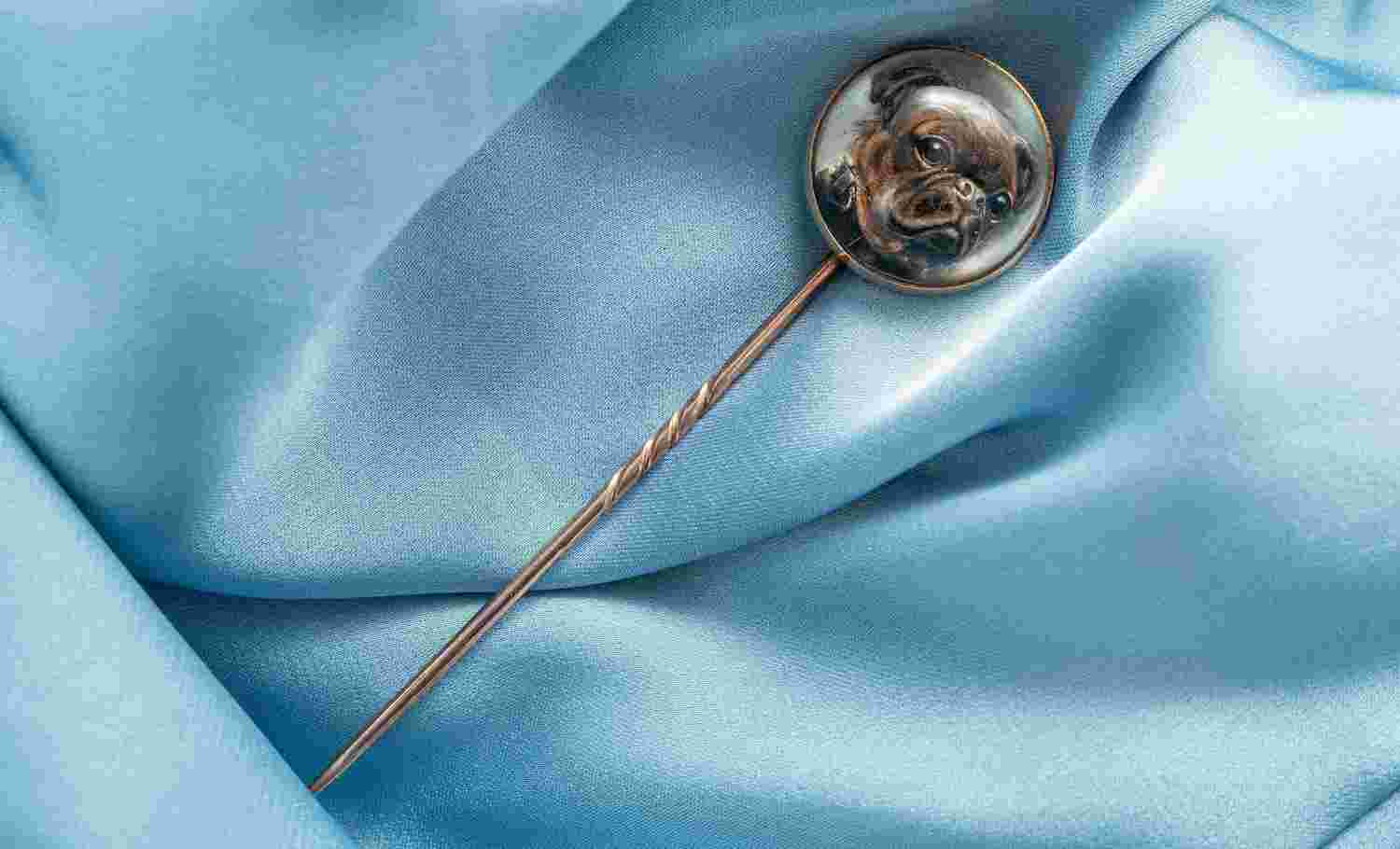Antique gold pin could shine in sale
 A £3 car boot sale find could net a lucky Lincolnshire couple hundreds of pounds after it turned out to be a precious antique made from gold.
A £3 car boot sale find could net a lucky Lincolnshire couple hundreds of pounds after it turned out to be a precious antique made from gold.
The pair were rummaging around stalls at an event in the village of Torksey, Lincolnshire, earlier this year when they came across the quirky treasure, a small pin featuring a tiny decorative circular painting of a dog.

They weren’t sure what it was but had an inkling from watching TV antiques programmes that it might be something special – and they were right.
They decided to show the piece to antiques expert and TV personality Irita Marriott, and they were thrilled by her response. She identified the gem as a reverse carved intaglio tie pin, an antique known as Essex crystal. Its tiny portrait depicts a boxer dog and the picture was created using a mysterious decorative technique developed in Belgium more than 160 years ago.
Irita, a popular personality on TV’s Bargain Hunt and Antiques Road Trip, said: “It’s an amazing find. When I first saw it, I was simply blown away. Even though I have seen many types of Essex crystal pieces before, this is the best one I’ve come across.
“The detail and the size of the painting is simply incredible. And to hear they had purchased it for just £3 – unbelievable! I’ve estimated its value at £300-£500 but it’s such a beautiful piece it may fetch more.

“There’s also a strange local connection for me. The mysterious technique of reverse carved intaglio originated in Belgium in circa 1860 courtesy of an artist called Emile Marius Pradier. However, Essex crystal was introduced to England by Thomas Cook, a famous businessman best known for inventing the package holiday.
“He was born in Melbourne, Derbyshire, more than 200 years ago. Melbourne just happens to be the picturesque historical town where I have opened my new auction house. The find will go into my inaugural auction on January 11 so you could say it’s come home.
“Thomas Cook (1808-1892) was an entrepreneur ahead of his time. He paved the way to mass tourism but clearly liked objects of beauty too. He made crystals for Lambeth & Co and the resulting reverse crystal intaglios were sold in London. Such was their popularity Cook trained an apprentice, Thomas Bean. Bean’s son and grandson carried on the tradition of reverse crystal intaglio production keeping the secrets of the unusual process in the family.
“Essex crystal pieces are formed from a rock crystal cabochon, polished domes of rock crystal with a flat base. An image or motif is then reverse carved into the base and painted to give the impression of a three-dimensional image encapsulated in the cabochon.”
The finder, a 46-year-old old builders merchants’ supervisor, said: “We were rummaging in a box at a car boot sale when we spotted the unusual pin. We were not sure whether it was special but had an idea as we’ve seen similar items on antiques programmes. I asked a price and they said £3 so we bought it. We Googled it when we got home and still thought there was no way it could be a genuine antique.
Irita Marriott is the new columnist for Antique Collecting magazine – subscribe here to get it delivered to your door each month.

